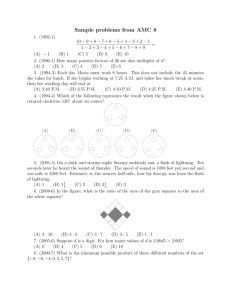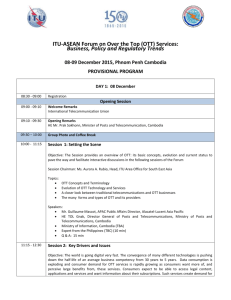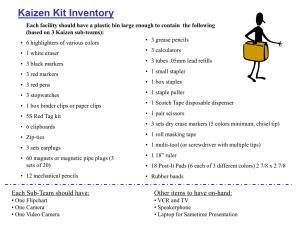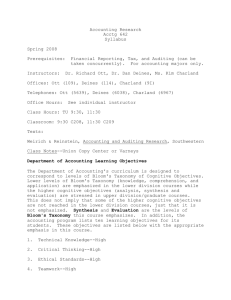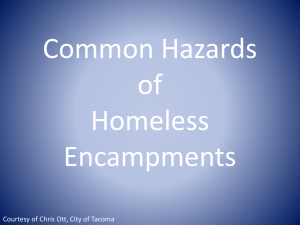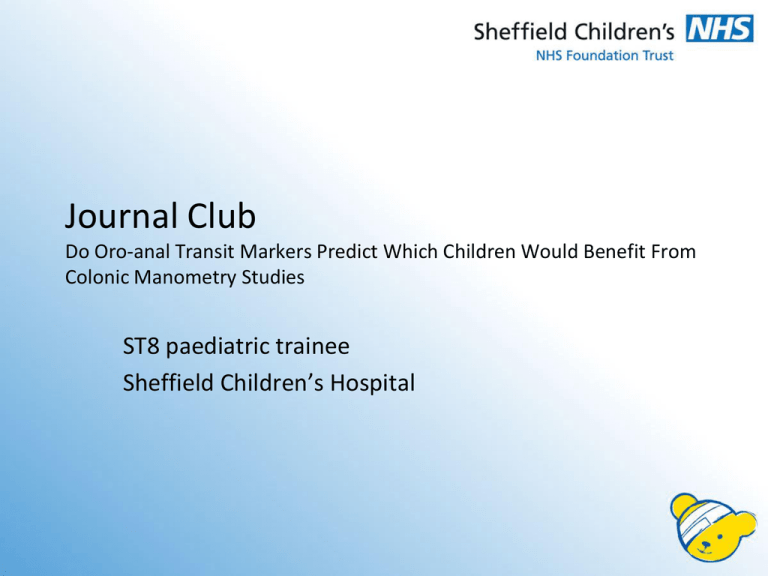
Journal Club
Do Oro-anal Transit Markers Predict Which Children Would Benefit From
Colonic Manometry Studies
ST8 paediatric trainee
Sheffield Children’s Hospital
Background
• Chronic constipation -25% of Gastro referrals
• Evaluation of colonic motility useful when laxatives/ behavior
modification fails
• Slow oro-anal transit time(OTT) found in about half of these
children
• Most of these children have motor abnormalities as identified
by colonic manometry studies
Aim of the study
• To correlate OTT to CM studies in children with constipation
• JPGN Feb 2012
• Do Oro-anal Transit Markers Predict Which Children would
Benefit From Colonic Manometry Studies?
Methods
• Retrospective study
• Records of children with constipation who
underwent OTT and CM studies reviewed
• OTT study performed using gelatin capsule with 24
markers
• Abd Xray taken after day 3 and day 5
• On day 5, on X ray, number of markers counted in 3
regions-left colon, right colon and recto-sigmoid
• >6 markers/region of colon on day 5 above rectum
significant.
Methods-contd
• CM study
• Tip of catheter placed beyond the hepatic flexure,
proximal site in rectum
• Perfused with 0.45% saline at 0.15 ml/min
• Baseline colonic contractions recorded for 1 hr
• Mixed solid/liquid meal given.
• Contractions recorded for 1 hr postprandial period
• Bisacodyl enema infused ,another hr contractions
recorded
Methods contd
• Normal- high amplitude contractions of 60mm of Hg
>10sec(HAPC) in aboral fashion
• Non propagative if contractions low amp/absent
• the presence of a gastro-colonic response, a
20% increase in the postprandial motility .
Clinical characteristics
•
•
•
•
•
Age at time of testing/sex
Symptoms
Duration of symptoms
Post test therapy-medication escalation/surgery
Stooling response- improved,unchanged,worsened,unknown
Clinical characteristics of children with slow and
normal OTT
Results
Example of slow oro-anal transit time (OTT) study and colon manometry (CM) tracings. A, OTT demonstrates retention of >8
markers at 5 days post-capsule ingestion and markers are scattered throughout the left colon. B, Normal CM
tracing shows high-amplitude propagating contractions (HAPC) propagating from the cecum to distal sigmoid colon. C, CMtracing in
subject with x-ray from panel A that shows an HAPC but with arrest at the distal transverse colon.
Results
• No statistical difference in clinical characteristics between
normal and slow transit time
Findings of OTT testing
• 5 children had normal OTT
4 had no markers and 5th- had 3 markers in
rectum
• 19 children had slow OTT
5 had markers that failed to progress
beyond right colon
7 had markers that failed to progress
beyond left colon
7 had diffuse distribution of markers.
Findings of Colonic manometry testing
• Fifteen had normal study and
• 9 had abnormal study
• no HAPCs in response to bisacodyl (3),
• segmental arrest of the HAPCs at the right colon (4),
• and segmental arrest of HAPCs at the
splenic flexure (2).
Correlation of OTT and CM study
• All 5 with normal OTT had normal CM study
• Of the 19 abnormal ones
• 5 had right sided markers
2 had normal CM
3 had left sided colonic pseudo obs
(2 myopathic,1neuropathic)
Correlation of OTT and CM study
• 7 left sided delay
3 normal CM
1 total cpo(myopathic)
3 left sided cpo(2 myo,one neuropathic)
• 7 diffuse distribution
5 normal
2 cpo(1 myo,1 neuro)
Outcome on follow up-Normal OTT
study
3 normal
OTT,3 normal
CM
Intervention
1 behavior
Outcome
Improvement
1 surgical
1 enhanced
medical
therapy
No
improvement
Outcome of Abnormal OTT-normal CM
8 normal
CM
2 behaviour
One surgical
5 medical
3 improved
3 improved
2 worsened
Outcome of abnormal OTT-abnormal CM
6
abnormal
CM
0 Behaviour
5 surgery
1 medical
1 medicalunchanged
Improved
Conclusion
• Assessment of oro-anal transit time is important in chronic
constipation
• Helps guide us to those who need CM
• A normal OTT precludes use of CM,so long as a larger
prospective study proves the same!
• Until larger prospective study completed , colon motility
study should be used in refractory constipation
Conclusion
• OTT is not a substitute for CM testing for neuromuscular
function.
Critical appraisal
• Small
• Retrospective study!
Critical appraisal
A Are the results of the study valid?
B What are the results?
C Will the results help me and my patients/population?
Are the results of the study valid?
1. Was there a clear question for the study to
address?
Population
Test
Setting
Outcomes
2. Was there a comparison with an appropriate
reference
standard?
Detailed questions
3. Did all patients get the diagnostic test and
the reference standard?
4. Could the results of the test of interest
have been influenced by the results of the
reference standard?
Was there blinding? Were the tests performed
independently?
Questions contd
5 . Is the disease status of the tested population
clearly described?
• - Presenting symptoms
• - disease stage or severity
• - co-morbidity
• - differential diagnoses
Questions contd
6. Were the methods for performing the test described
in sufficient detail?
? A protocol followed
Questions contd
• What are the results?
• Are the sensitivity and specificity and/or likelihood ratios
presented?
• - Are the results presented in such a way that we can
work them out?
Questions
8. How sure are we about these results?
• - Could they have occurred by chance?
• - Are there confidence limits?
• - What are they
Questions
• C/ Will the results help me and my
patients/population?
• 9 Can the results be applied to your patients the
population of interest?
Such as age, sex, ethnicity
Questions
• 10 Can the test be applied to your patient or
population of interest?
Resources
availability of expertise
Current practise
Questions
11 Were all outcomes important to the
population considered?
individual or
Will it change patient management?
12 What would be the impact of using this test
on your patients/population?

